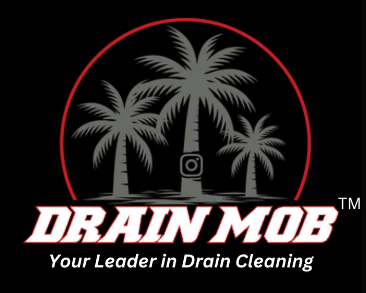
The traditional method of sewer line replacement involved excavating the ground to replace the damaged pipe, causing significant disruption to the property and the surrounding area.
Fortunately, advancements in technology have led to the development of trenchless sewer line replacement, a more efficient and cost-effective method of repairing or replacing sewer lines without excavation.
In this article, we will discuss the benefits of trenchless sewer lines, including the advantages of the technology, the cost-effectiveness, and the environmental impact.
What is Trenchless Sewer Line Replacement?
Trenchless sewer line replacement is a process of repairing or replacing sewer lines without excavation.
There are two main types of trenchless sewer line replacement: pipe bursting and pipe lining.
Pipe bursting involves breaking the old pipe and replacing it with a new one.
Pipelining, on the other hand, involves inserting a pipe liner into the old pipe and curing it in place to create a new pipe within the old one. Both methods are effective and can be used to repair or replace sewer lines of different sizes and materials. Unlike pipe bursting, pipe lining is recommended due to a lack of excavation. Similar to hiring a locksmith, tackling certain intricate jobs requires specialized skill to prevent even more expensive problems down the line.
The Advantages of Trenchless Technology
Trenchless technology offers several advantages over traditional methods. Firstly, it eliminates the need for large-scale excavation, which means that there is minimal disruption to the property and surrounding area. This is particularly beneficial in urban areas where excavation can be costly and disruptive.
Secondly, it is faster than traditional methods, reducing the time it takes to complete the project. Lastly, this process is more efficient, as it requires fewer workers and equipment, reducing labor costs.
The Cost-Effectiveness of Trenchless Sewer Line Replacement
Trenchless sewer line replacement is also cost-effective compared to traditional methods. Although the initial cost may be higher, the overall cost of the project is significantly lower due to the reduced labor costs and the elimination of excavation costs/cosmetic repairs.
Additionally, trenchless technology can extend the life of the sewer line, reducing the need for future repairs and replacements.
The Environmental Impact
Trenchless sewer line replacement is also more environmentally friendly than traditional methods.
Excavation can cause soil erosion and damage to the surrounding vegetation, leading to environmental degradation.
Trenchless technology minimizes the disturbance to the soil and vegetation, reducing the environmental impact of the project.
Additionally, trenchless sewer line replacement reduces the amount of waste generated, as it eliminates the need for excavation and disposal of the soil.
The Types of Trenchless Sewer Line Replacement: Choosing the Right Method for the Job
Trenchless sewer replacement involves two methods, pipe lining or pipe bursting. Both of these routes come with their own advantages and disadvantages.
90% of the time, the best method for rehabilitating compromised sewer lines is to reline the cast iron or affected pipe using an epoxy pipe liner.
This process involves cleaning the old pipe back to its maximum diameter and flushing out the knocked-off debris. Then installing an epoxy felt pipe liner in the newly cleaned cast iron, inflating and allowing it to cure in place. This process is much like angioplasty however, rather than opening up a blood vessel we are rehabilitating and opening up the sewer pipe for better flow capacity.
The second method is to actually burst the existing pipe with a hole on each side of the compromised section of the pipe.
Pipe bursting is a process of pulling a metal cable, with a metal cone head, attached to a new pipe that will be pulled through the original pipe. The pipe, being pulled in, will split the existing pipe and lay a new pipe in its place. However, with this method, you cannot go through the footing of a home/building, and if there are tie-in connections the pipe may need to be dug out.
Overall, the process of pipelining eliminates the need for extensive excavation, reducing the time and cost of the project. Trenchless sewer line replacement is becoming increasingly popular due to its numerous benefits.
| Method #1: | Pull in Place Pipe Lining | Method #2: | Pipe Bursting |
| Pros | Cons | Pros | Cons |
| *Lining under the slab *Can gap tie-in connections *Can line over tie-in connections *Reinstatement method for tie-in connections *Fitting liners *Can fix some potentially collapsed pipes | *May require a small amount of excavation *If the pipe is completely broken or collapsed, may need to dig *Need open pipe or clean out access | *Can fix old/weak pipes with hard plastic | *Need 2 holes minimum Must be 2ft in depth *Need to rebuild connections *Can’t go through the footing *Rocks or tree roots will prolong the process |
Factors Affecting the Cost of Trenchless Sewer Line
The cost of trenchless sewer line replacement depends on several factors, including the extent of the damage, the size and material of the pipe, the location of the pipe, and the type of trenchless technology used.
However, despite the initial cost being higher than traditional methods, trenchless technology can save property owners money in the long run due to reduced labor costs and the elimination of excavation costs.
The Importance of Choosing a Professional Company
It is essential to choose a professional and experienced trenchless sewer line replacement company to ensure the quality of work and avoid future issues. A professional company can accurately diagnose the problem, recommend the most appropriate solution, and ensure that the project is completed efficiently and effectively. Additionally, a professional company can provide a warranty on their work, giving property owners peace of mind. Just as hiring a good locksmith is crucial for providing security to your home with a reliable lock, a reliable plumber also ensures the integrity of your house.
The Limitations of Trenchless Sewer Line Replacement
Although trenchless sewer line replacement offers many benefits, it may not be suitable for all situations. For example, if the pipe is severely damaged or collapsed, traditional excavation methods may be necessary. Additionally, some types of soil or terrain may make trenchless technology difficult or impossible to use.
Maintenance of Trenchless Sewer Line
Trenchless sewer line replacement requires minimal maintenance, as the new pipe is resistant to corrosion and root intrusion. However, regular inspections and cleaning are recommended to ensure the longevity of the sewer line and prevent future issues. Drain mob uses a 100 percent maintenance warranty and can be cabled, snaked, and jetted and will not void the warranty.
Conclusion
Trenchless sewer line replacement offers numerous benefits over traditional excavation methods, including reduced disruption, cost-effectiveness, and environmental friendliness. By choosing a professional and experienced company, property owners can ensure that the project is completed efficiently and effectively.
Although trenchless technology may not be suitable for all situations, it is an excellent option for repairing or replacing damaged sewer lines without excavation.



